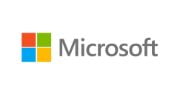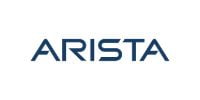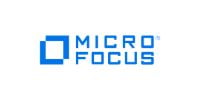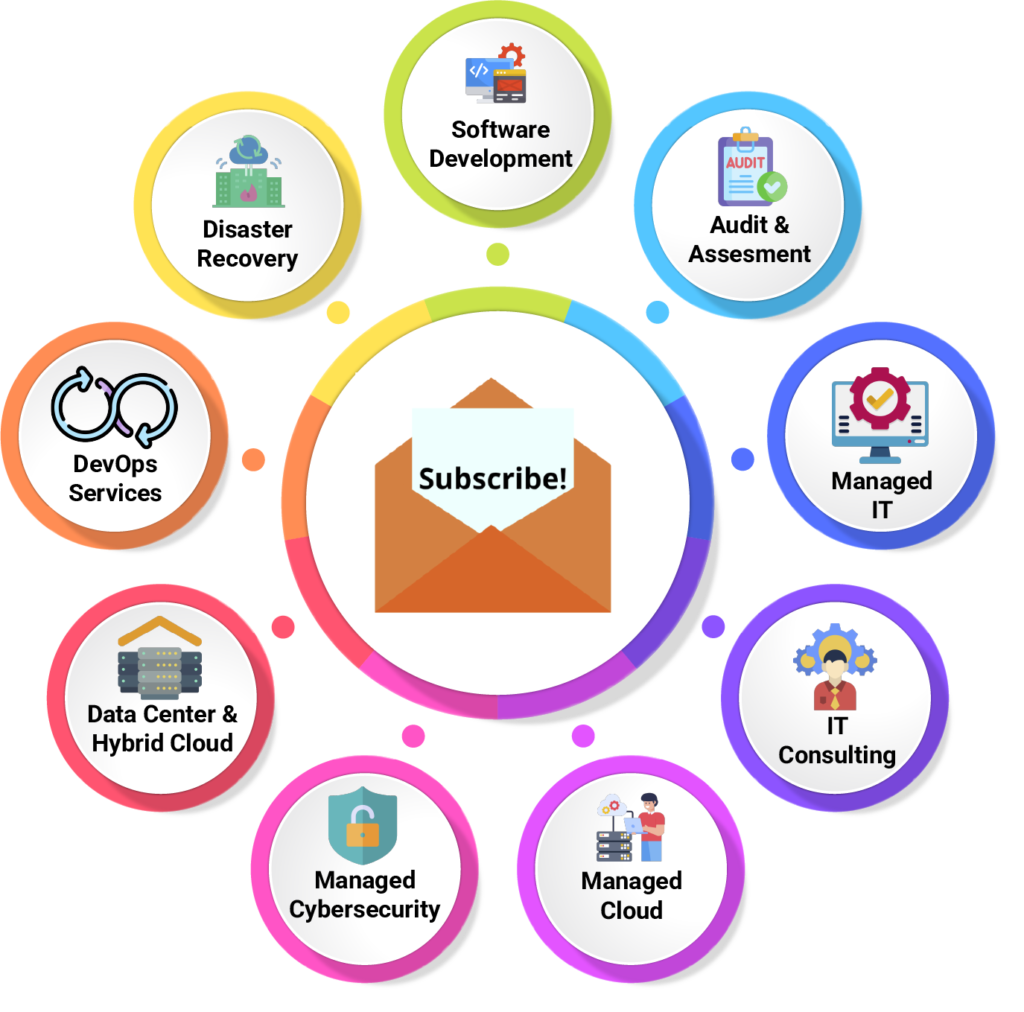What Are Modern Applications?
The applications which are loosely coupled, lightweight, easy to scale, designed to run on container-based platforms are known as modern applications. By using these types of applications, organizations can easily achieve availability, reliability, scalability, portability & security.
Why Storage And Backup Play A Major Role In Modern Applications?
The are many things involved to achieve the performance and availability of the application. From a storage perspective the performance, availability, SLA of the application is depending on the following
- Storage type (Direct Attached Storage/ Network Attached Storage / Storage Area Network/ Software-Defined Storage)
- Storage media type (Solid State Drive/Hard Disk Drive).
- Storage interface type (SATA, NL-SAS, SAS, NVMe)
- Read & Write IPOS
- Cache
- RADI level / Replication Factor
- Deduplication & Compression
- Storage protocol type (FC/iSCSI/NFS)
- Cross-site data replication (Sync/Async)
From a backup perspective the granularity, SLA of backup, and recovery of the application depends on the following
- Backup Storage type (Disk/ Tape)
- Backup type (Agent-based / Agentless)
- Backup frequency (Daily/Weekly/Monthly)
- Backup policy (Full/incremental/Differential)
- Backup software (Veritas/Commvault/Veeam/Networker)
- Deduplication & Compression
- Backup Source & Destination (Physical/Virtual/Container)
What Are The Different Storage And Backup Options Available For Modern Applications?
The following are the storage options majorly used by the organizations:
Software-Defined Storage
A logical pool of storage combined from multiple physical server’s local storage is known as software-defined storage. The administrators have the flexibility to create block /file/object storage from the logical pool. SDS is best suited for general-purpose workloads, DevOps workloads, VDI workloads. The below diagram is an example of software-defined storage.
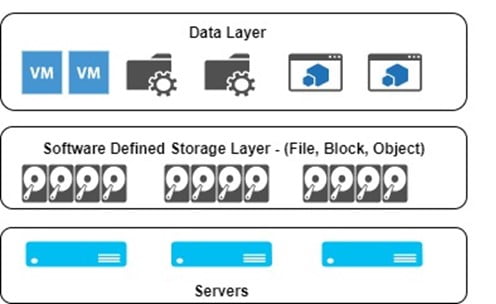
An SDS software is the core component of the SDS solution. There are many SDS products in the market.
The following are the SDS Market leaders
SAN Storage (Storage Area Network)
An array of disks with redundant storage controllers, redundant I/O modules, redundant power supplies is known as SAN Storage. This type of storage is mostly used for heavy workloads which require more storage, storage replication to one or more sites.
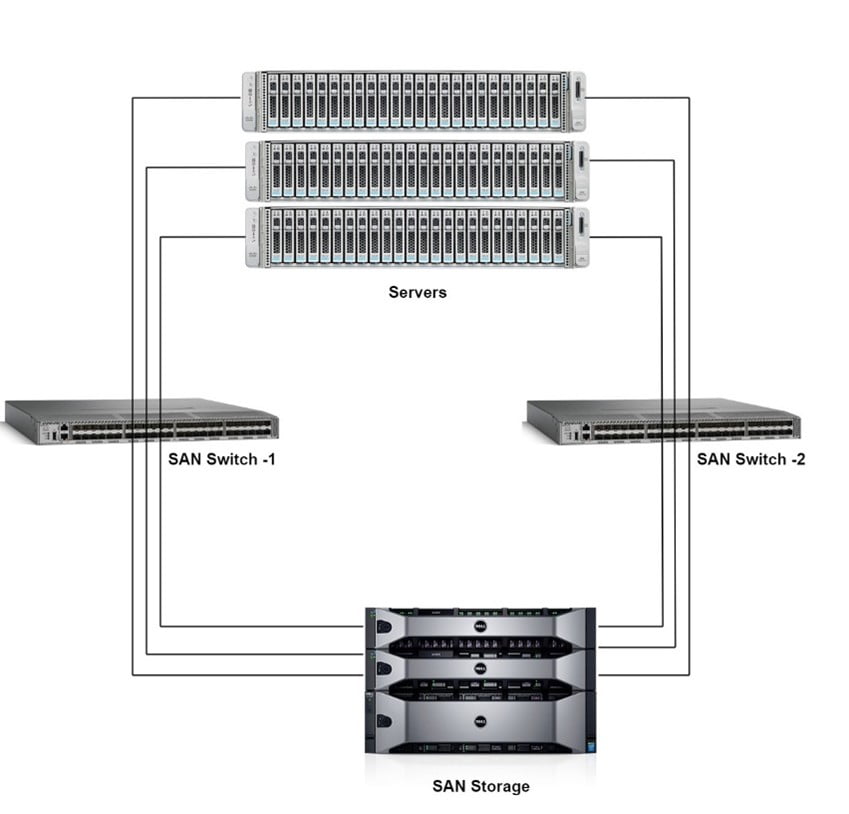
SAN Storage can easily scale up by adding more disks and scaled out by adding more disk array enclosers. The above diagram is an example of SAN Storage.
DAS (Direct Attached Storage)
This type of Storage is directly attached to the motherboard of the server. Best suited to load the Operating System/Hypervisor).

Also, a light-weighted, non-mission-critical application can be installed in this type of storage. Data high availability can be achieved by hardware or software RAID.
Backup Software
Backup is very important for applications. If in case the primary storage or application crashes the application can be restored from the backup. In the backup solution, there are two main components backup software & backup storage. The policies, schedule, restore & management of backup can be done through backup software. The backup data is stored in the backup storage such as Tape library, backup appliance, NAS.
There are multiple options in the backup solution. The following are the major options used by organizations across different verticals.
Option 1: Backup Appliance
The backup appliance is integrated with the Backup software & backup storage. Single pane of glass management for both backup software and storage.
Option 2: Backup Server + Backup Storage
The backup server hosts the back software and the backup storage (Tape library/NAS/Cloud Storage). The administrators have to use different management consoles to manage the backup server & storage
There may backup products in the market. The following are the market leaders in the backup solution:
– Veritas
– Commvault
– Veeam
– DELLEMC DataDomain
– IBM
The licensing for backup is based on the capacity/No of VM’s or physical servers/ No of CPU’s. Organizations have the flexibility to choose the license based on their requirement. Nowadays backup software products companies are supporting various backup sources such as VM, BareMetal, Database, Container image, etc.
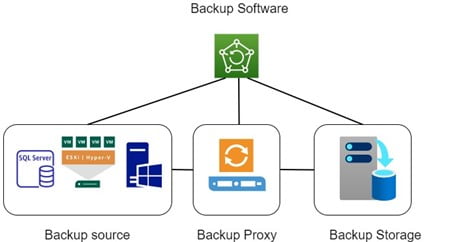
Are your storage and backup hardware being due for a refresh? Are you looking for the best-suited storage and backup solution for your modern application? Then Why wait when Zindagi is here to work with you. Zindagi technologies give consulting, designing, implementation, and also do operations & maintenance for the completer data center solution. You can get in touch with us, or you can give us a call on +919773973971 and meet our experienced techs who are ready to solve your technical problems.
Author
Leela Krishnan
Data Center Consulting Engineer



